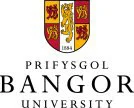A RESEARCH ship which has played a part in providing us with sustainable seafood and has changed our understanding of marine sciences, celebrates 20 years of service to science and education this month.
Based at Bangor University, the research vessel, the Prince Madog is a purpose-built, flexible multi-purpose research platform for conducting science along the British coastline and in the Irish or Celtic Sea. It is used for research and to educate and train future marine scientists at Bangor University.
The Prince Madog is the UK’s only fully seagoing research vessel focussing on the coastal seas on the vital ‘coastal’ seas. These shallower seas up to the continental shelf, are the most influenced by human activity- and are also the most important to us, as a resource for fishing and renewable energy.
The ship at Bangor University has played a crucial role in educating new generations or marine scientists of all disciplines.
The ship is the second to bear the name at the University’s School of Ocean Sciences. Over 50 years old, the School of Ocean Sciences is the only such School in the UK, and one of the largest in Europe.
Bangor University alumni Professor Ed Hill CBE Chief Executive of the National Oceanography Centre (NOC) commented: “As we embark on the United Nations Decade of Ocean science this year, it is an especially fitting time to reflect on the 20 years of magnificent service to marine research, education and training provided by RV Prince Madog and to look forward to the important work yet to be done in the coming decade, – undertaking the science we need for the ocean we want – clean, healthy, safe, productive, predicted and inspiring.”
Head of School, Professor John Turner explained the ship’s role: “Research and teaching aboard the Prince Madog, the largest research vessel in the UK higher education sector, focusses on the vital coastal seas. These shallower seas are important for fishing, marine renewable energy, recreation and tourism.
“The ship is capable of working in strong currents and most weather conditions and was custom built to undertake scientific surveys across the spectrum of marine science, from coastal waters to the shelf edge.”
As well as being used for the University’s own world-leading research, she has also been used by industry, government agencies and other science research groups.
The University works in partnership with the Welsh Government to help ensure that the seas around Wales are clean, healthy, safe, productive and biologically diverse. The Prince Madog is being used to gather data from the seas around Wales. This will assist the Welsh Government to fulfil its marine and fisheries evidence requirements.
As Professor Turner explains: “Gathering evidence from the seas around Wales is essential in order to maintain good standards in our marine environment. This involves developing appropriate targets, indicators, assessment criteria and monitoring programmes to acquire relevant data.”
Data collected by the Prince Madog has not only guided science and policies of governments, it has also influenced and changed the curriculum of marine science students around the globe.
Professor Paul Spencer, Pro Vice-Chancellor commented: “The Prince Madog has been an asset to Wales, the UK and internationally, both in education and research. The impact of School of Ocean Sciences research over decades is remarkable. It has changed science in a number of spheres, re-written textbooks and played an important role in supporting the continued sustainable development of the marine environment.
“We look forward to many more years of ground-breaking research and impact from the decks of the Prince Madog.”
Some major findings based on data collected from the Prince Madog over the last two decades include:
Safeguarding sustainable fisheries
Research techniques and analysis developed using data from the Prince Madog have been used to assess the impact of trawling on the seabed, and have been applied globally to develop sustainable fisheries.
The Prince Madog has contributed to safeguarding the sustainability of our sea food, from scallop fisheries in the Isle of Man, to demonstrating that mussel cultivation had no negative effects on other species and that it also enhanced populations of oystercatchers
Past marine climates
Techniques using seashells to unpick past marine climate were first developed at Bangor University using samples collected from the Prince Madog in the Irish Sea. This helped to unpick past climate of coastal seas globally. Scientists on-board the research vessel also helped reveal sea-level changes in geological time-scales and locally, including identifying exactly when Anglesey become an island.
Revealing the hidden depths
The installation of the latest high-tech sonar equipment has enabled scientists aboard the Prince Madog to locate and identify shipwrecks. By studying the scouring and movement of the seabed around the shipwrecks, the scientists can advise the marine renewable energy industry on the best locations for siting wind turbines and other seabed structures.
Predicting weather and climate
Measurements made from both Prince Madog research vessels have been key in the development of new techniques for measuring the ocean turbulence which mixes different waters in the ocean.
These techniques and measurements are used globally in validating ocean climate models, used in both weather and climate prediction, and by the Marine Renewable energy industry.
Validating satellite information
Over the past 50 years satellites have revolutionised our view of the ocean by providing ocean wide images of sea surface properties such as sea surface temperature. However for these measurements to be useful they must be ground truthed again direct ocean measurement.
Over the past few decades measurements made from the Prince Madog in the Irish Sea and Clyde Sea have been used to ‘ground truth’ satellite measurements of ocean properties.


















Add Comment